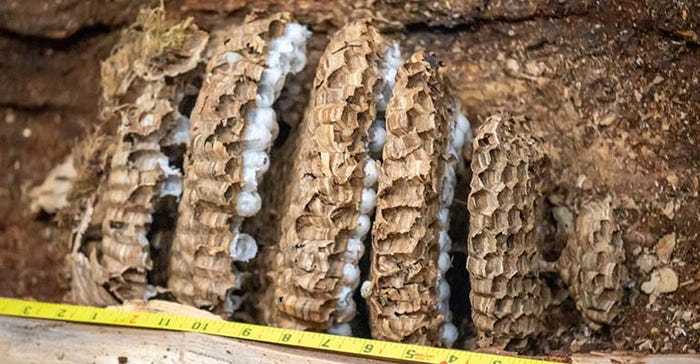November 10, 2020

The Asian giant hornet has garnered some solid media attention since the first queen was discovered in December 2019. Every call with the Washington State Department of Agriculture offering media insights might have its share of national media on tap. The latest call, held Tuesday, Nov. 10, offered some interesting numbers on the nest find announced in late October.
Sven-Erik Spichiger, a WSDA entomologist who has been heading up the AGH effort, shared a timeline and some key numbers on that nest.
"On October 21, we discovered the nest," he says. "On October 24, early in the morning, the nest was destroyed at 4 a.m. using vacuum extraction then the nest was sealed."
On Oct. 28, the tree was removed and taken to a cold room in an isolation facility at WSDA and on Oct. 29 the nest was opened. The work, which involved Chris Looney, a WSDA entomologist and Spichiger colleague, found some interesting facts.
The next was 8.3 feet in the air, which is not unheard, but higher than normal for this invasive species.
In the tree there were 6 combs that were 9-inches across, which was about the size of the cavity in the tree. The stack of combs was 14-inches high.
Detailing hornet comb contents
Spichiger explains that the comb had 776 cells "That number is a rough guess since the outer edges could have been damaged when we took down the tree," he says.
108 of those cells was capped with pupae, the stage after larvae, in development to eventually become what appear to be virgin queens
They found 64 cells where insects had emerged. That number would represent new queens, but it's unclear since Spichiger says the queens eat the cap from their cells. But after vacuum extraction, they found queens in the hive still alive. These may have emerged after the hive was sealed.
They also found 190 dead larvae; 112 worker hornets that cannot breed; and 9 male drones. Adding it all up, Spichiger says the nest yield 500 specimens from all hornet life stages.
The total number of queens found added up to 76, including three found in a nearby bucket after the next was sealed. Spichiger also notes the vacuum extraction pulled out mostly workers, and now queens.
While the extraction was a success, and they're learning plenty about the hive found, he adds that this was a small cell even though nearly 200 queens were found (76 alive, and 108 still in cells). A certain percentage of queens in any nest will mate and form new nests in the following year, Spichiger says.
"To put that in perspective, a traditional nest can have 4,000 cells, and as many as 800 will contain queens," he says. "The nest we found at 776 cells and 200 total queens."

HORNET HOME: The tree housing the nest contained 6 combs and more than 500 hornets at different life stages. The tree, cut down on Oct. 29, is yielding a range of information for the Washington State Department of Agriculture.

Still nests to be found
This effort to track and find the nest was great news for WSDA, but Spichiger says the work will continue. He explains there's evidence that there are other nests given the other hornet finds that have turned up.
While an Asian giant hornet can fly at up to 50 mph, which Spichiger says is faster than the average middle-aged entomologist, they don't travel that far from their nests. The finds are contained in Whatcom county and near the border with British Columbia and efforts to find the nests continue.
He adds that the breeding cycle of the AGH involves virgin queens mating with males outside the nest, and once mated they find shelter usually underground. They over winter in a diapause, or sleeping, state to emerge in the new year to start a new hive.
To keep up with the issue, visit agr.wa.gov/hornets
About the Author(s)
You May Also Like






